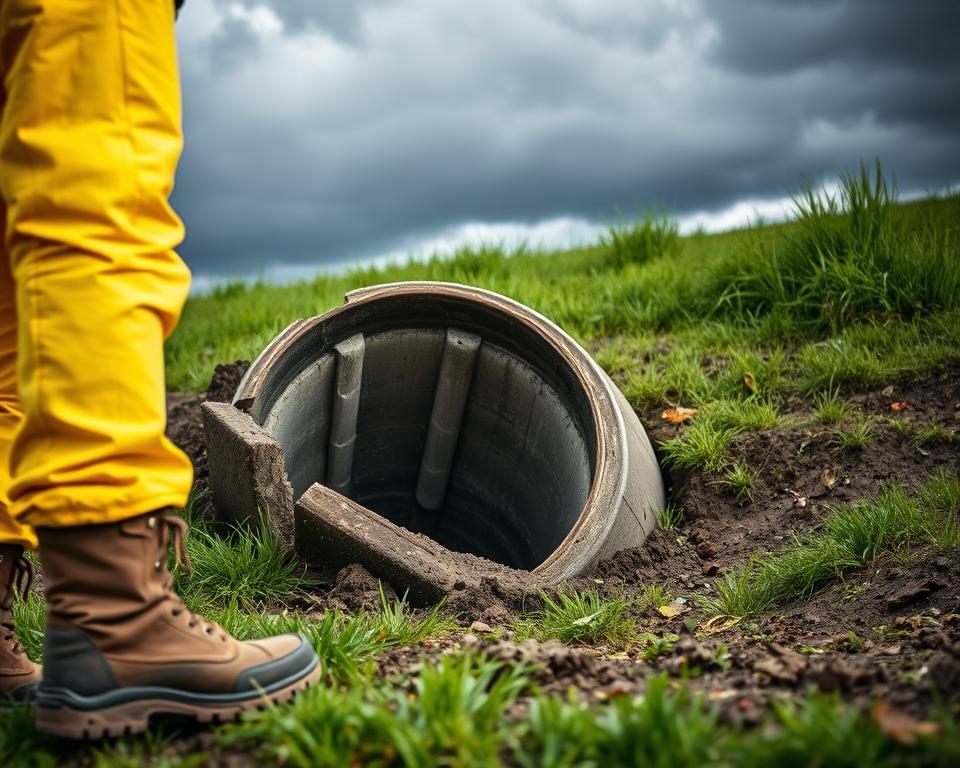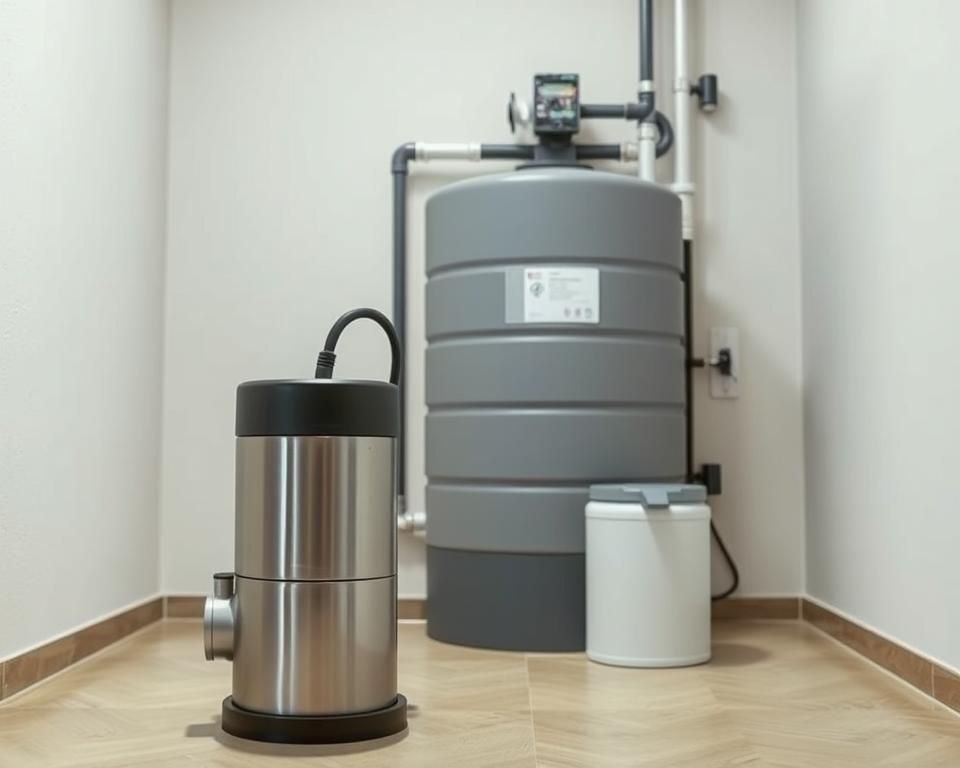Grease Interceptor Pumping: Keep Your Kitchen Running Smooth
Ever pondered the function of a compact gadget in averting business culinary pipework disasters? Grease interceptor pumping goes beyond mere upkeep—it’s essential for effective restaurant culinary waste handling. These interceptors, crucial for collecting fats, oils, and grease (FOG) produced during meal prep, prevent clogs. Without consistent pumping, they can clog, causing expensive repairs and service interruptions. Let’s explore the significance of grease interceptor cleaning and its role in ensuring a seamless culinary operation, all while adhering to ecological standards.
Understanding Grease Traps and Their Importance
Oil interceptors are essential for the efficient running of commercial culinary spaces and food handling establishments. They capture grease, fats, and hard refuse before they reach the drainage system. This function is crucial for maintaining culinary hygiene. It’s essential to grasp how these interceptors function to ensure they work effectively and support a sanitary work environment.
What are Grease Interceptors?
A grease trap, also called a industrial grease trap cleaning, is a gadget intended to catch fats, oils, and grease (FOG) from effluent. Installed in the pipework of culinary spaces or food service establishments, it prevents these materials from going into the drainage system. This stops clogs or blockages in conduits, preventing costly repairs and potential hygiene issues.
How Do Oil Interceptors Function?
The functioning of grease traps is based on weight separation. Wastewater enters the trap, where heavier particles sink at the base. Meanwhile, less dense grease and oil float to the top, forming a layer of FOG. This arrangement allows cleaner liquid to exit the interceptor and move into the drainage system.
Regular inspection of grease interceptors is crucial for their best functioning. Upkeep includes taking out collected FOG and solids to stop overflow and system breakdown. Proper fats, oils, and grease disposal through timely upkeep ensures kitchens function seamlessly and ensures hygiene.
Typical Problems with Oil Traps
Oil interceptors are crucial for maintaining culinary spaces sanitary and efficient, particularly in the meal serving sector. Neglecting them can lead to numerous issues that affect functions. Knowing these problems aids in concentrating on sewage system maintenance for better functionality.
Clogs and Blockages
Blockages and obstructions are significant concerns with grease traps. They often stem from fats, oils, and greases (FOG) buildup. This buildup can block water flow, leading to sewage backups. Thus, frequent drain line cleaning is crucial to stop these blockages. Regular checks help identify blockages in advance, preventing bigger problems.
Foul Smells and Pest Infestations
Ignoring grease interceptors also causes foul smells and insect infestations. Collected organic material causes bad odors, making the kitchen undesirable to work in. These odors draw pests, increasing hygiene dangers. A consistent maintenance schedule for grease interceptors is key to handling meal service sector refuse effectively. It guarantees a clean, pest-free environment, promoting a safer kitchen environment.
Grease Trap Pumping: Crucial Maintenance for Your Kitchen
In the world of dining establishments and business kitchens, grease trap pumping is paramount for maintenance. Making sure your grease trap remains in optimal condition is essential for both operational effectiveness and ecological compliance. It’s important to know the best cleaning frequency and to identify indicators that signal the need for service. This awareness can greatly lower expenses and conserve effort over time.
Frequency and Planning of Pumping
Choosing the correct pumping frequency for grease interceptors hinges on various elements. The capacity of the interceptor and the amount of fats, oils, and grease (FOG) your kitchen produces are key factors. Typically, it’s recommended to pump grease traps every 1 to 3 months. Frequent checks assist in ensuring seamless operations and compliance to regional regulatory standards.
Indicators That Your Oil Trap Needs Pumping
Staying alert for signs that your grease interceptor requires cleaning can avoid major problems. Watch for these signals:
- Slow drains: If sinks drain slower than normal, it could indicate the grease trap is clogged.
- Frequent plumbing clogs: Regular clogs suggest a grease interceptor having trouble to handle waste volume.
- Foul smells: A unpleasant odor near the trap signals it’s time for cleaning.
Handling these signs promptly enhances performance and guarantees ecological compliance for dining establishments. Regular maintenance avoids expensive repairs and promotes a hygienic kitchen environment.
Benefits of Frequent Grease Interceptor Maintenance
Regular maintenance of grease interceptors is essential for your kitchen’s efficiency and functionality. A regular schedule for checks and clearing avoids interruptions and ensures a secure, hygienic culinary area. This preventative approach is crucial to a efficient kitchen.
Preventing Expensive Repairs
Proactive maintenance helps kitchen operators spot and fix problems in advance. Regular inspections identify blockages and obstructions, avoiding expensive repairs that could halt functioning. Each maintenance session ensures grease interceptors function efficiently, lowering the risk of plumbing breakdowns and urgent issues.
Enhancing Kitchen Sanitation
Frequent maintenance of grease interceptors boosts kitchen hygiene. It lowers grease and food fragments, lowering the risk of bad smells and microbes. A sanitary grease interceptor creates a more secure culinary space and meets food safety standards, crucial for patron satisfaction. Efficient upkeep has a major beneficial impact on kitchen operations.
| Advantage | Description | Effect on Kitchen Operations |
|---|---|---|
| Cost Savings | Reduces the chance of unexpected pipework problems that cause expensive fix expenses. | Ensures continuity of operations without unplanned disruptions. |
| Improved Hygiene | Reduces bad smells and microbes linked to grease buildup. | Creates a sanitary and safe space for meal preparation. |
| Adherence | Fulfills legal standards by ensuring cleanliness. | Avoids fines and legal issues due to poor kitchen hygiene practices. |
Choosing the Best Oil Trap Cleaning Service
Choosing a trustworthy grease interceptor maintenance service is crucial for maintaining optimal functioning in restaurants and commercial kitchens. It’s essential to select a company with extensive experience in grease trap maintenance. Firms like Oil Interceptor Pumping Service guarantee compliance with regional standards and offer comprehensive cleaning to maintain your grease interceptors efficient.
Experience and Knowledge in Offerings
A well-known service has a proven track record in managing grease traps effectively. Their experience in commercial plumbing offerings enables them to identify potential issues early. With experienced technicians, companies can anticipate thorough cleaning and upkeep schedules tailored to each culinary space’s unique needs. This method prolongs the longevity of the sewage system.
Ecological Responsibility in Refuse Disposal
Service excellence isn’t the only factor; environmental compliance is just as vital. The best grease interceptor maintenance service prioritizes responsible refuse removal methods. Efficiently handling the gathering and removal of grease and solids shows a commitment to sustainability. By choosing a provider that matches with these principles, companies can guarantee their grease interceptor upkeep is both effective and eco-friendly.



